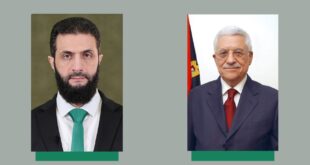Damascus, SANA- Al-Nuri Bimaristan or (Medicine and Sciences Museum) is a historical hospital and medical school in Damascus Old City, southwest of the Great Umayyad Mosque
It was built in two phases. The Zangid sultan Nur al-Din Zangi erected the main building in 1154. An extension was added to the building in 1242 by a doctor named Badr al-Din. The extension allowed the hospital to serve a larger number of patients without compromising the building’s original form.
The Bimaristan was famous for being the first medical university in the whole East and it used to accommodate 1300 beds.
Ibn al- Nafis was one of the most famous scientists who graduated from Bimaristan al-Nuri or the (Medicine and Sciences Museum).
The original structure of the hospital is still intact, revealing Seljuk architectural designs in terms of its plan, form and ornamental elements. In essence, it is a courtyard building with an elaborate entrance block.
The entrance is located on the western side of the building, where an ornate entrance portal opens onto the street. The portal is made of two large wooden doors wrapped in a layer of copper fitted to the wood with brass nails arranged in a geometric pattern.
The gate leads into a square chamber (measuring 5 sq. meters). On the north and south sides, apse-like spaces flank the chamber, the one on the south leading onto a set of rooms. On the east side, a second gateway leads onto the building’s central courtyard via an Iwan.
Passing through the gateway on the east side of the entrance chamber leads through an Iwan opening onto the building’s central interior courtyard.
A rectangular pool measuring occupies the center of the courtyard. The courtyard is framed on all sides with an Iwan flanked by two chambers. These chambers are capped with intersecting vaults.
The southern Iwan with its marble veneer has a Mihrab or “niche” that is decorated with organic forms. The largest Iwan is the eastern one, opposite the entrance block, it was used for the doctors’ meetings and lectures.
The Iwan has two storage spaces encased within the walls which were built-in bookcases that contained many medical books that Nur al-Din had donated to the Bimaristan.
Ruaa al-Jazaeri
 Syrian Arab News Agency S A N A
Syrian Arab News Agency S A N A












